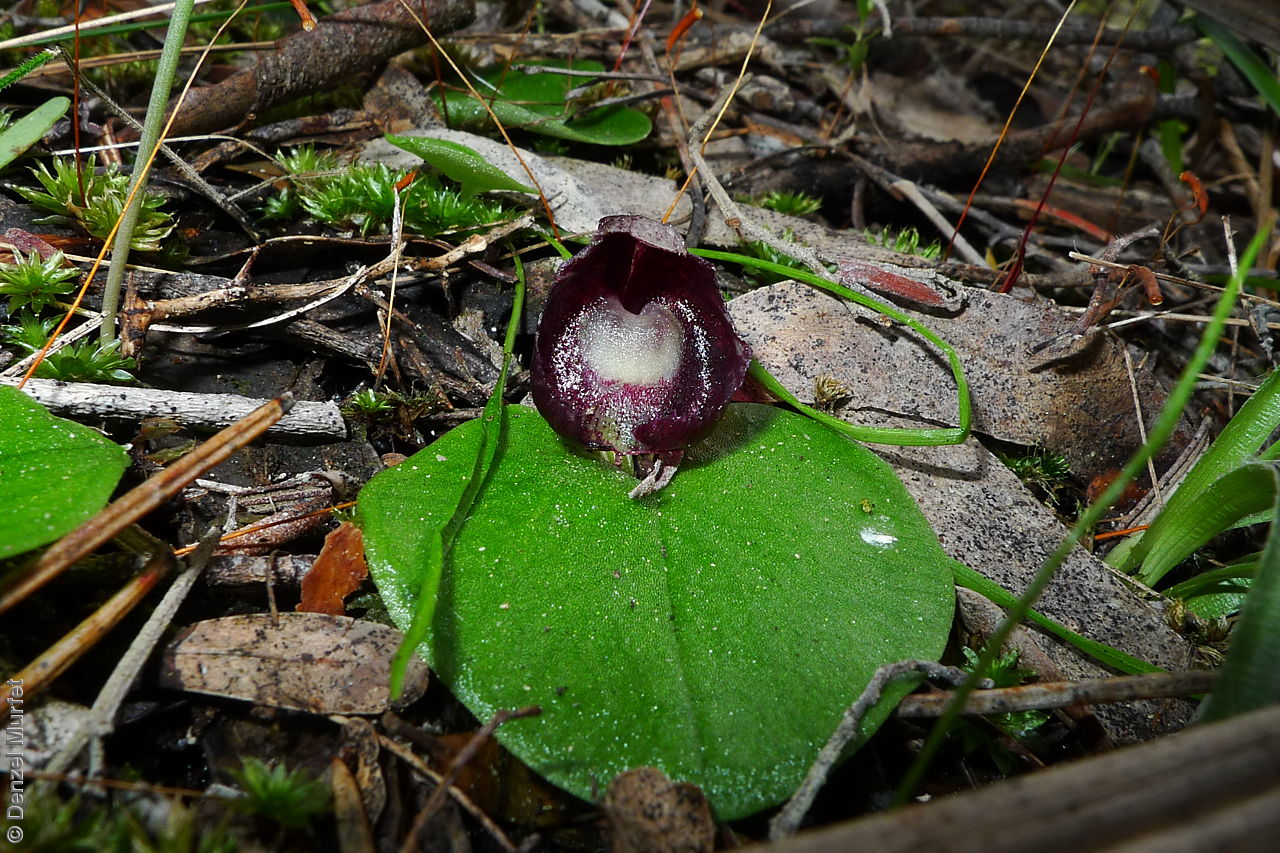
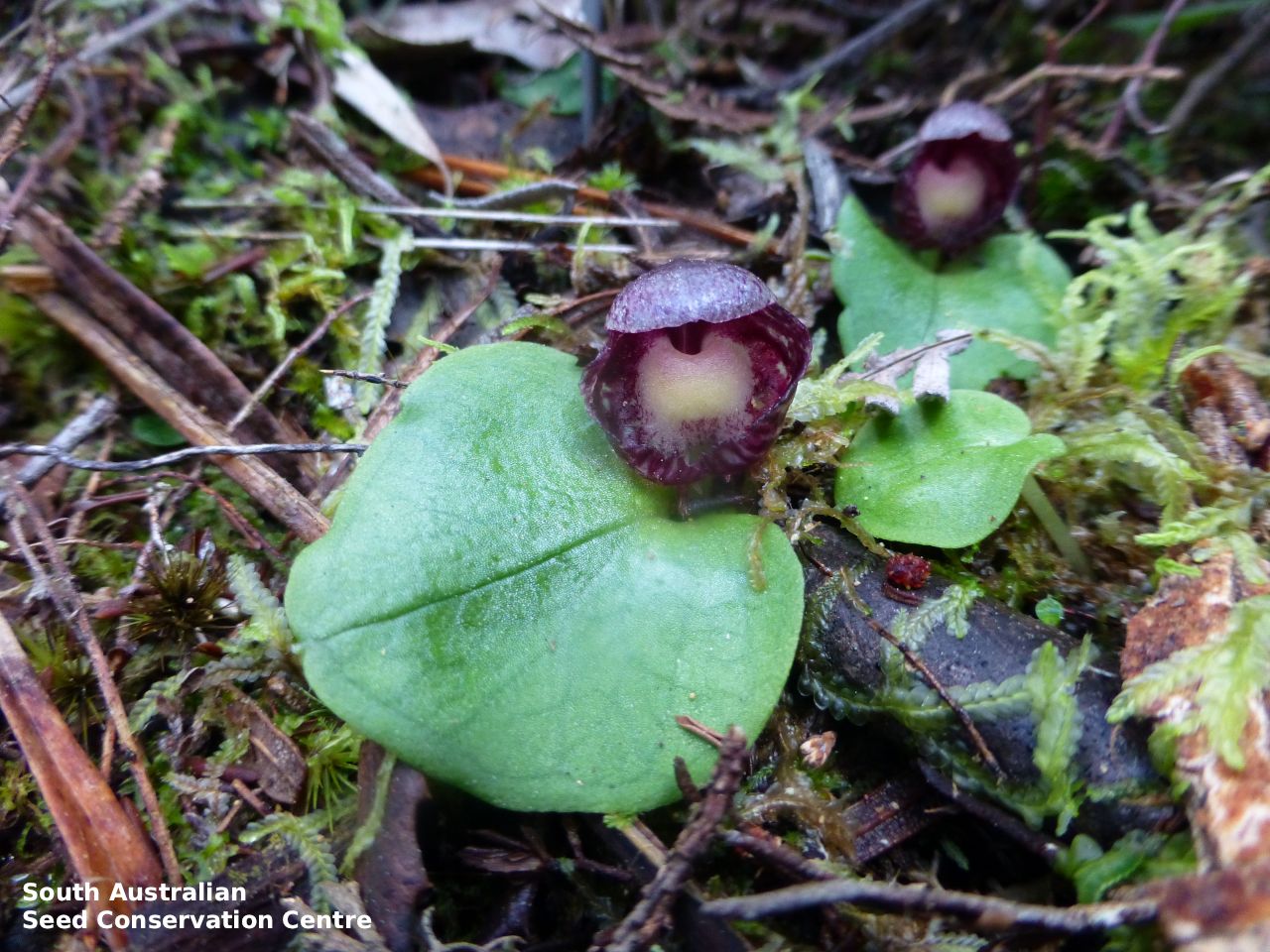
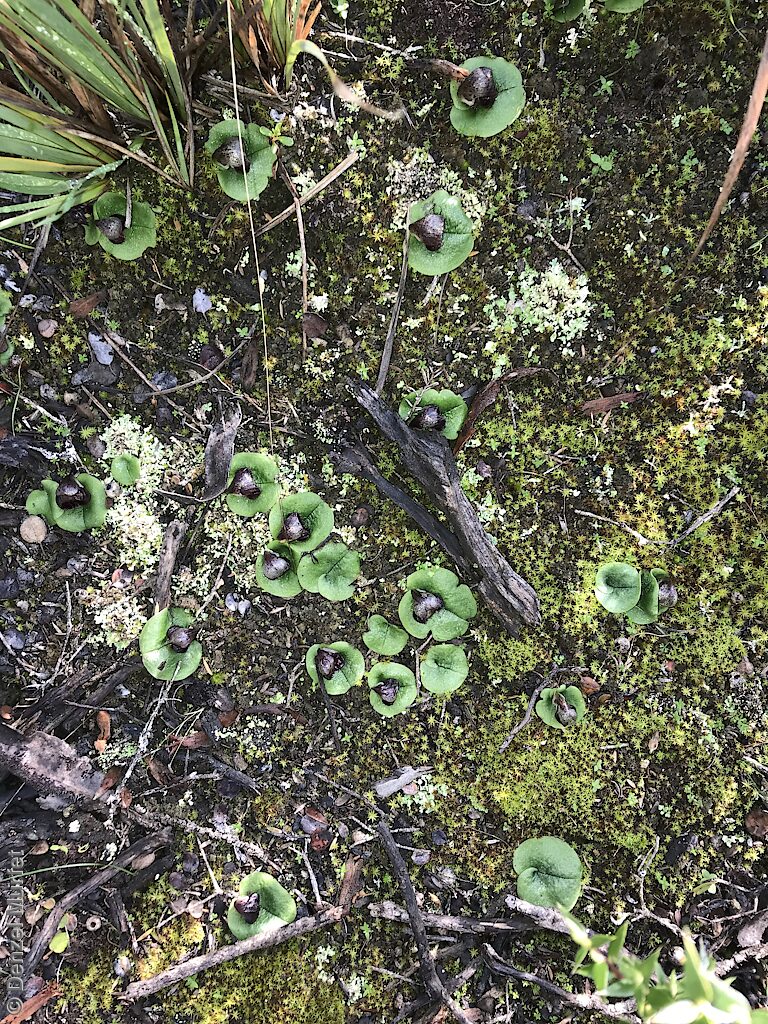
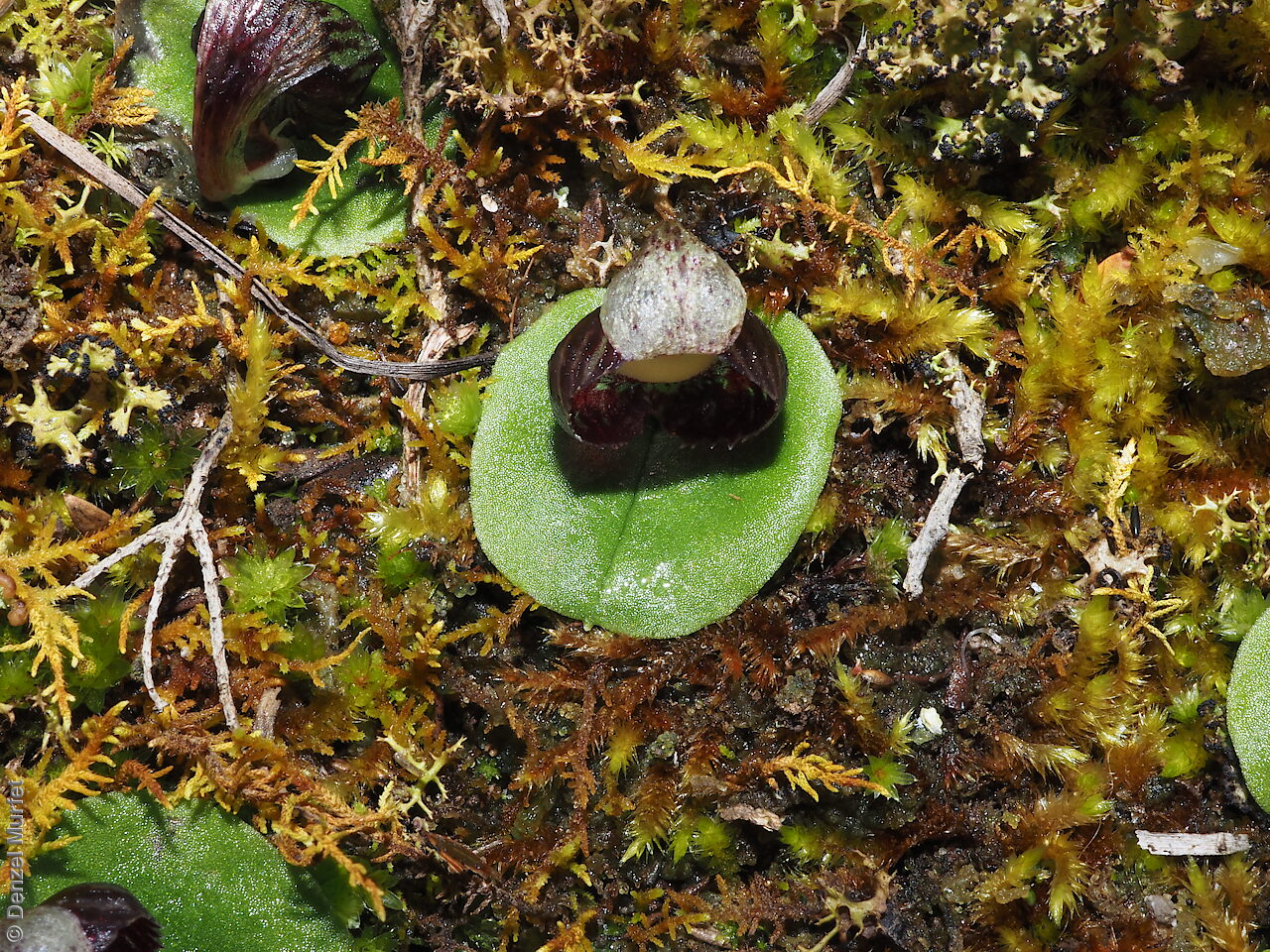
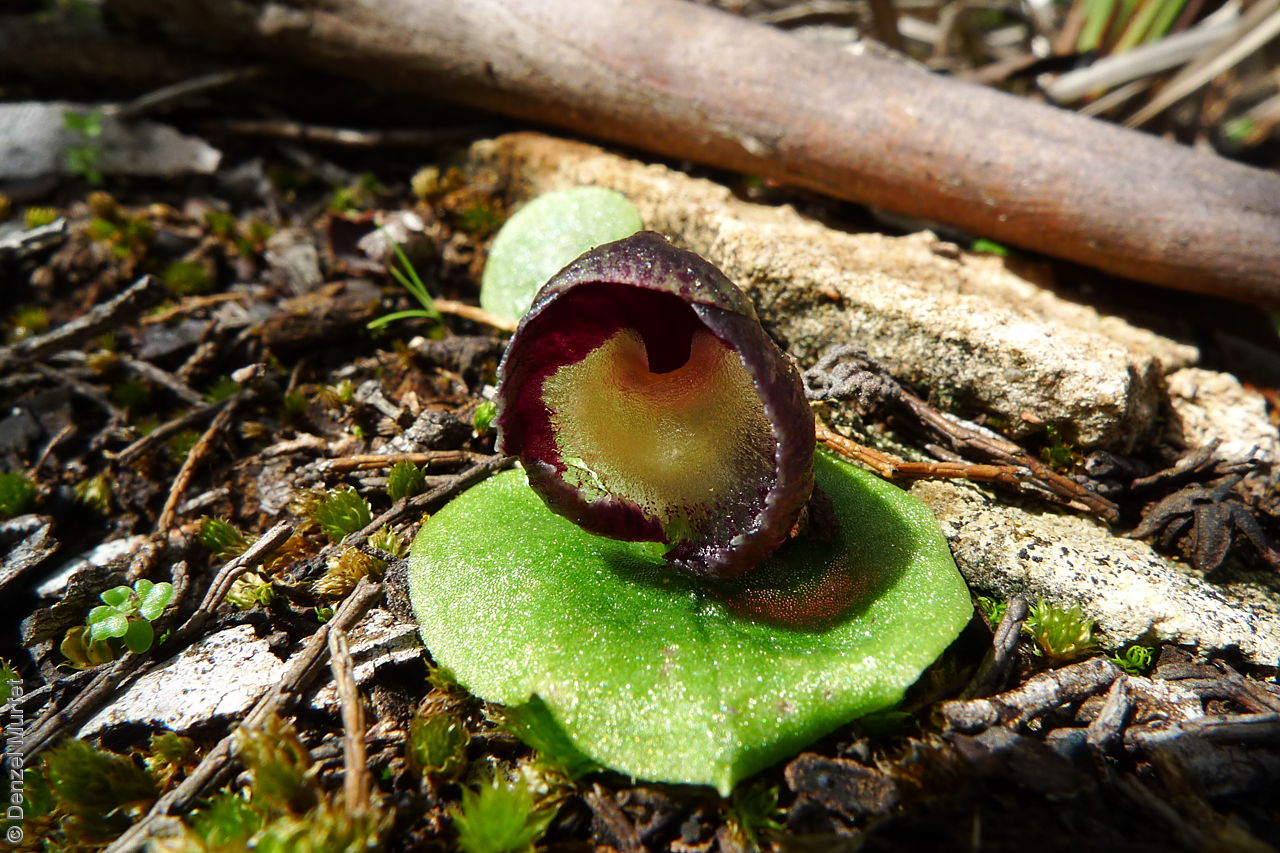
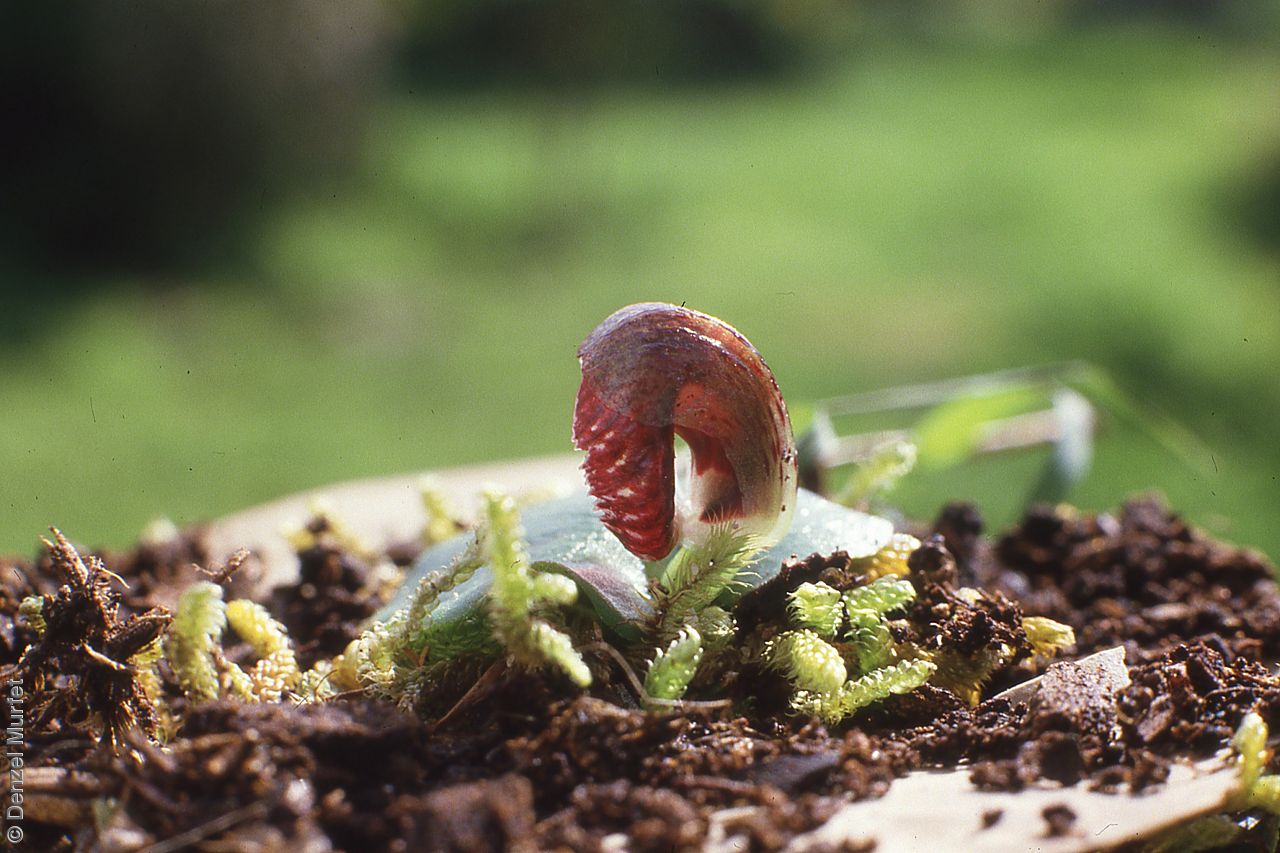
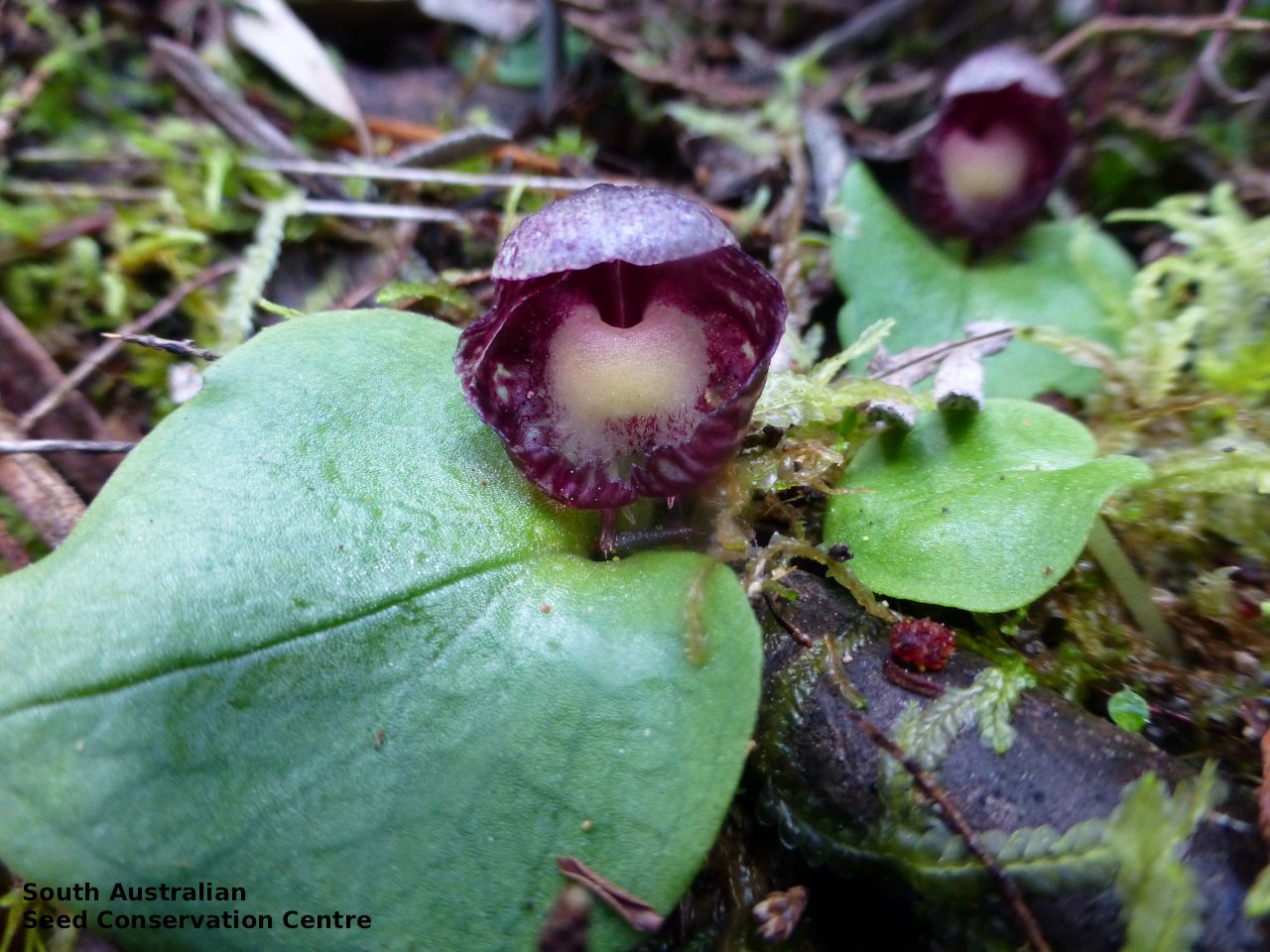
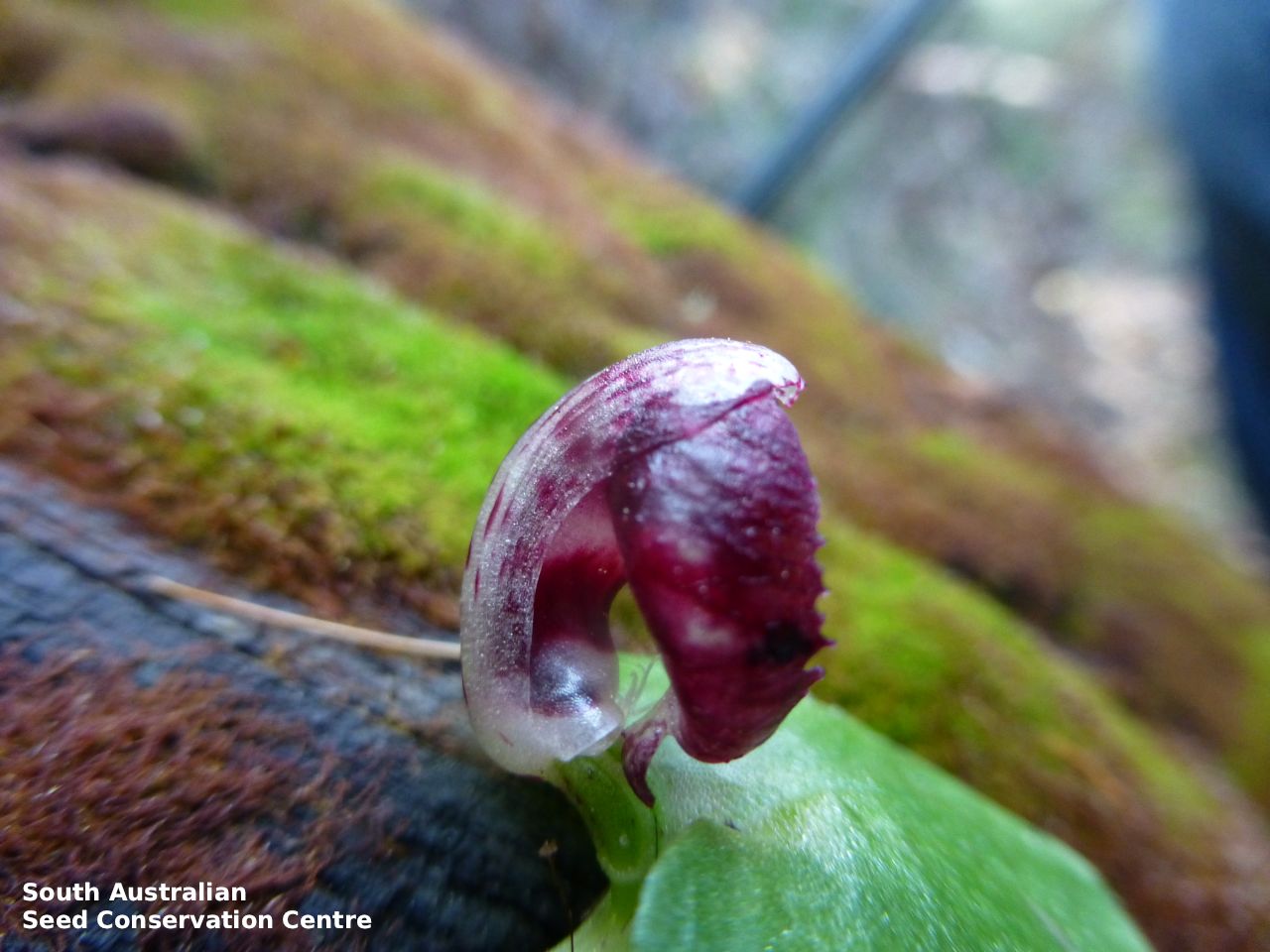
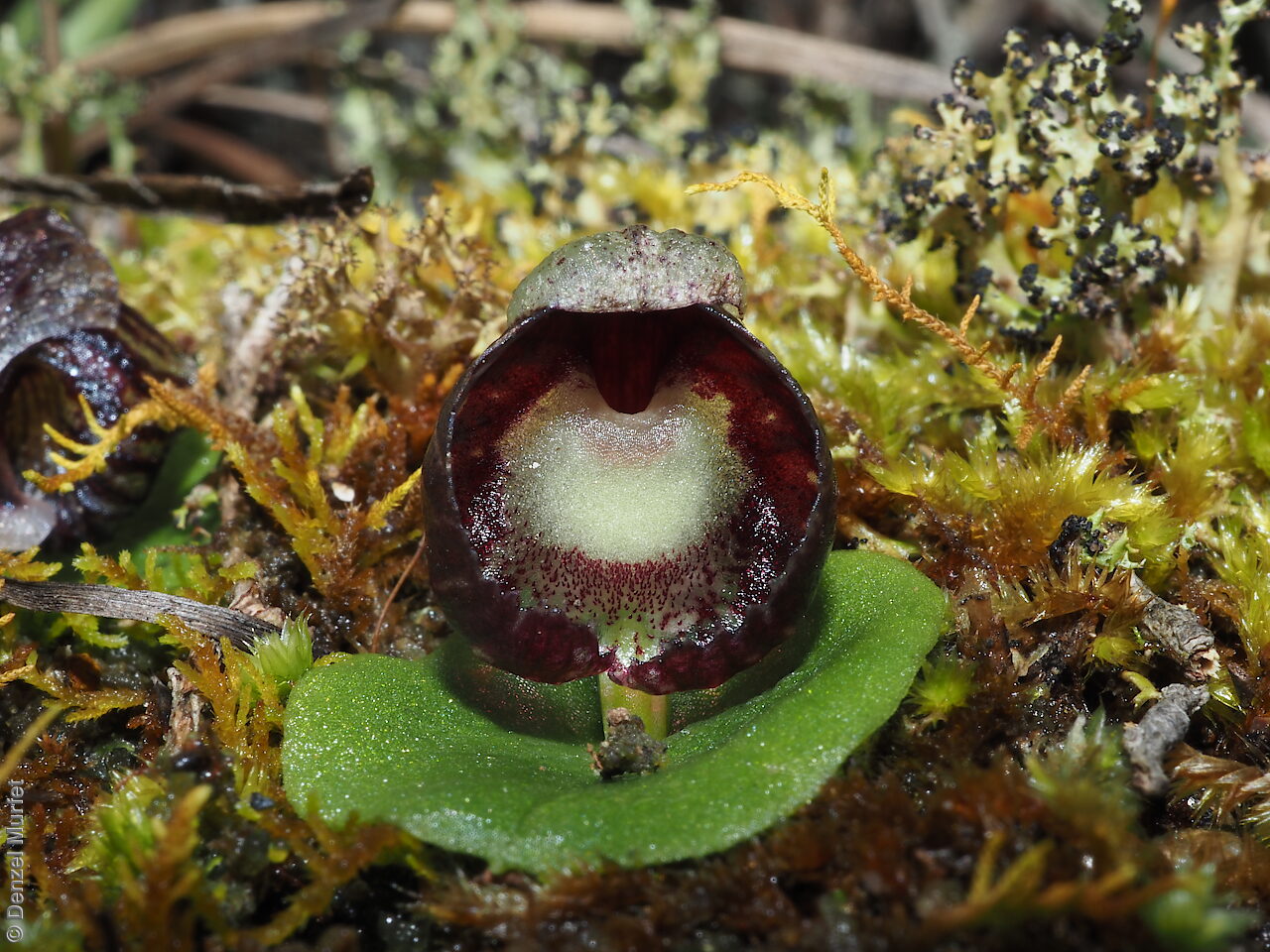
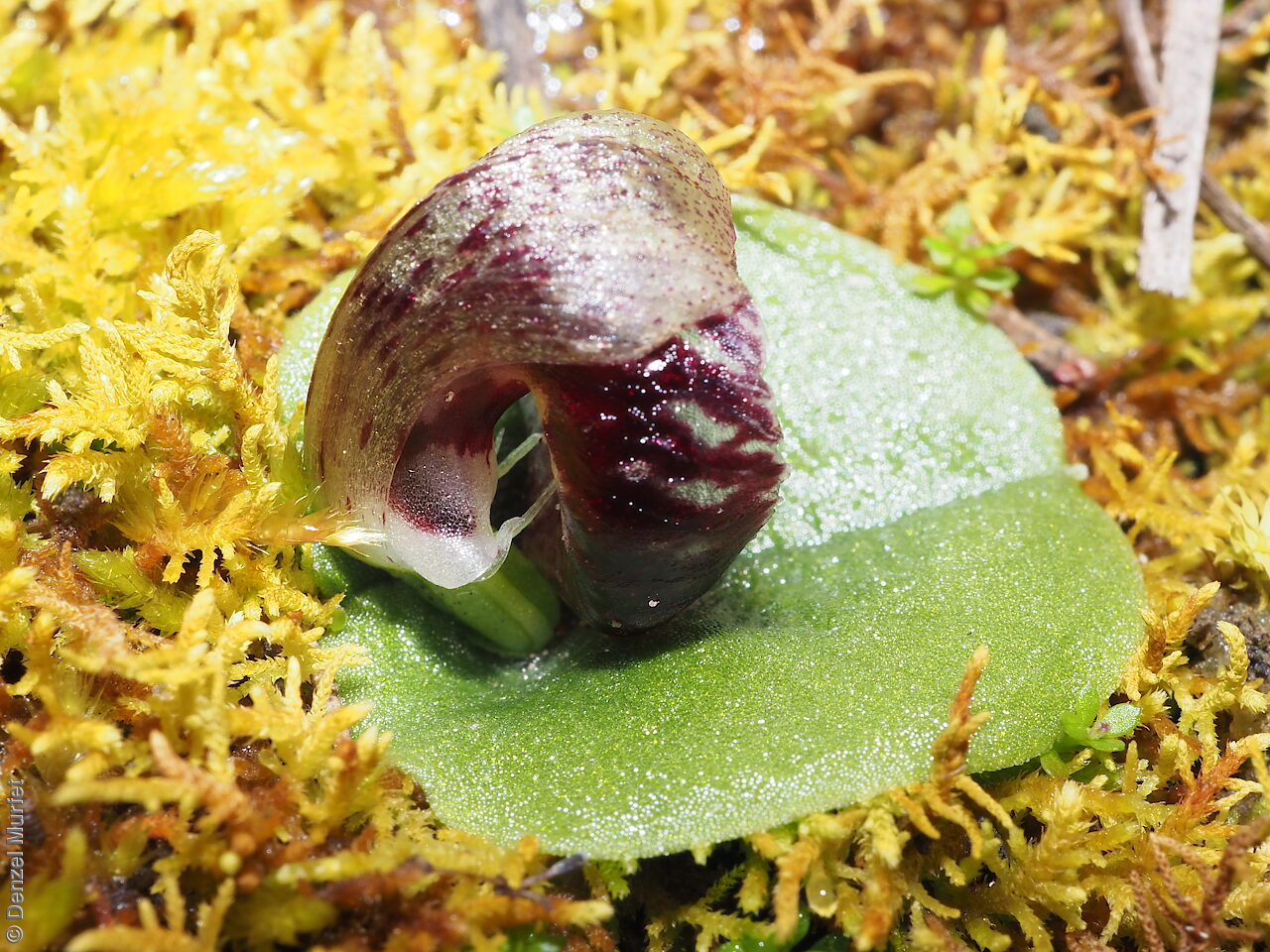


Botanical art
Prior names
Corysanthes incurva
Corybas sp.
Common names
Purple Helmet-orchid
Slaty Helmet-orchid
Etymology
Corybas from the Greek 'korybas' one of the dancing priests of the goddess Cybele in Phrygia, or a drunken man, an allusion perhaps to the flower's resemblance to the priest's head-dress, or to the stoop of a drunken man. Incurvus from the Latin meaning incurved, referring to the incurved margins of the labellum.
Distribution and status
Found on Kangaroo Island, Mount Lofty Ranges and the South-east in South Australia, growing in moist heath, woodland and forest. Also found in New South Wales, Victoria and Tasmania. Native. Uncommon in South Australia. Uncommon in New South Wales. Common in the other states.
Herbarium regions: Flinders Ranges, Eyre Peninsula, Northern Lofty, Murray, Southern Lofty, Kangaroo Island, South Eastern, Green Adelaide
NRM regions: Adelaide and Mount Lofty Ranges, Eyre Peninsula, Kangaroo Island, Northern and Yorke, South Australian Arid Lands, South Australian Murray-Darling Basin, South East
AVH map: SA distribution map (external link)
Plant description
A terrestrial orchid with a single broad egg-shaped to heart-shaped leaf to 30 mm long and 25 mm wide, dark green on the upper surface and silvery green on the lower side. Flower single, dark purple, to 17 mm long. Dorsal sepal greenish with purple markings, to 22 mm long and 14 mm wide and curves forward forming a hood over the labellum. Lateral sepals are linear, to 5 mm long and 0.5 mm wide, joined at their base. Petals about 3 mm long and 0.5 mm wide, often with tip divided into two. Labellum is tube shaped near its base then opens into a flattened area, white patch in the centre and the edges turn inwards and have a few short teeth. Flowering between June and August. Fruits are tiny brown papery ellipsoid capsule. Seeds are very small with a long cylindrical translucent brown mesh-like covering.
Seed collection and propagation
Collect seeds between July and September. Collect fat capsules as they start to dry and turn brown. Pods will split and release the seeds quickly and will require monitoring. To increase the chances of collecting mature pods, it is recommended that a small breathable bag (ie. Organza bags) be used to enclose the developing capsules. Place the capsules in a container that will hold fine seeds and leave to dry for a few weeks or until the capsule split. Then carefully hold the capsule and tap it gently to release the seeds. Store the seeds with a desiccant such as dried silica beads or dry rice, in an air tight container in a cool and dry place, a refrigerator or in liquid nitrogen.